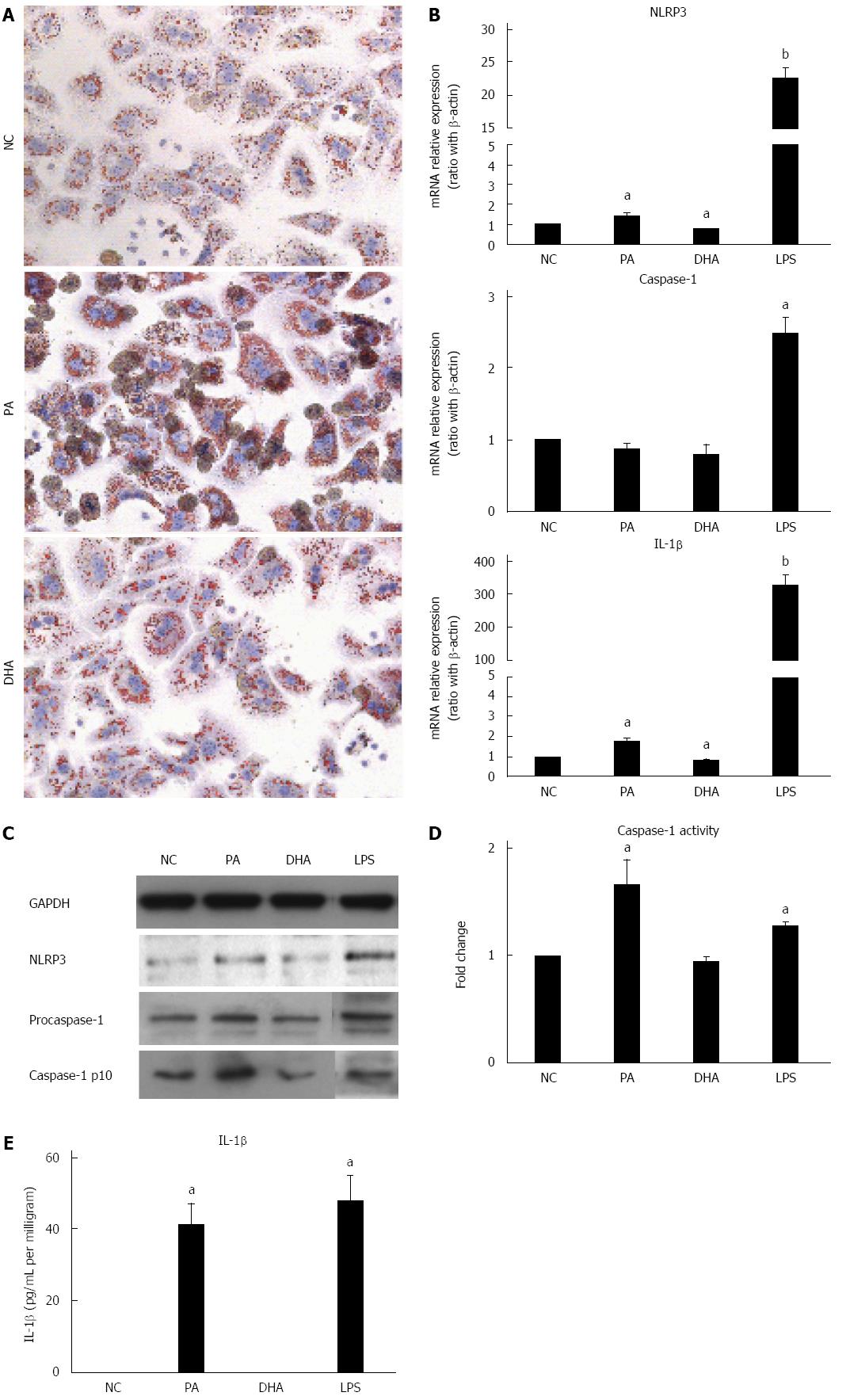Copyright
©The Author(s) 2016.
World J Gastroenterol. Feb 28, 2016; 22(8): 2533-2544
Published online Feb 28, 2016. doi: 10.3748/wjg.v22.i8.2533
Published online Feb 28, 2016. doi: 10.3748/wjg.v22.i8.2533
Figure 2 Effect of different fatty acids on NOD-like receptor protein 3 inflammasome activation in hepatocytes.
Primary hepatocytes were isolated from wild-type C57BL/6 mice and were treated with either palmitic acid (PA, 0.5 mmol/L) or docosahexaenoic acid (DHA, 50 μmol/L). A: Lipid deposition in hepatocytes after exposure to PA or DHA for 24 h; B: mRNA expression of NLRP3 inflammasome components after FFAs treatment for 6 h; C: Protein expression of NLRP3 and caspase-1 in Western blot; D: Caspase-1 activity and E: Culture supernatant IL-1β level. Values are Mean ± SEM, aP < 0.05, bP < 0.01 vs normal control (NC), n = 3 experiments. NLRP3: NOD-like receptor protein 3; GAPDH: Reduced glyceraldehyde-phosphate dehydrogenase; LPS: Lipopolysaccharide; IL-1β: Interleukine-1 beta.
- Citation: Sui YH, Luo WJ, Xu QY, Hua J. Dietary saturated fatty acid and polyunsaturated fatty acid oppositely affect hepatic NOD-like receptor protein 3 inflammasome through regulating nuclear factor-kappa B activation. World J Gastroenterol 2016; 22(8): 2533-2544
- URL: https://www.wjgnet.com/1007-9327/full/v22/i8/2533.htm
- DOI: https://dx.doi.org/10.3748/wjg.v22.i8.2533









